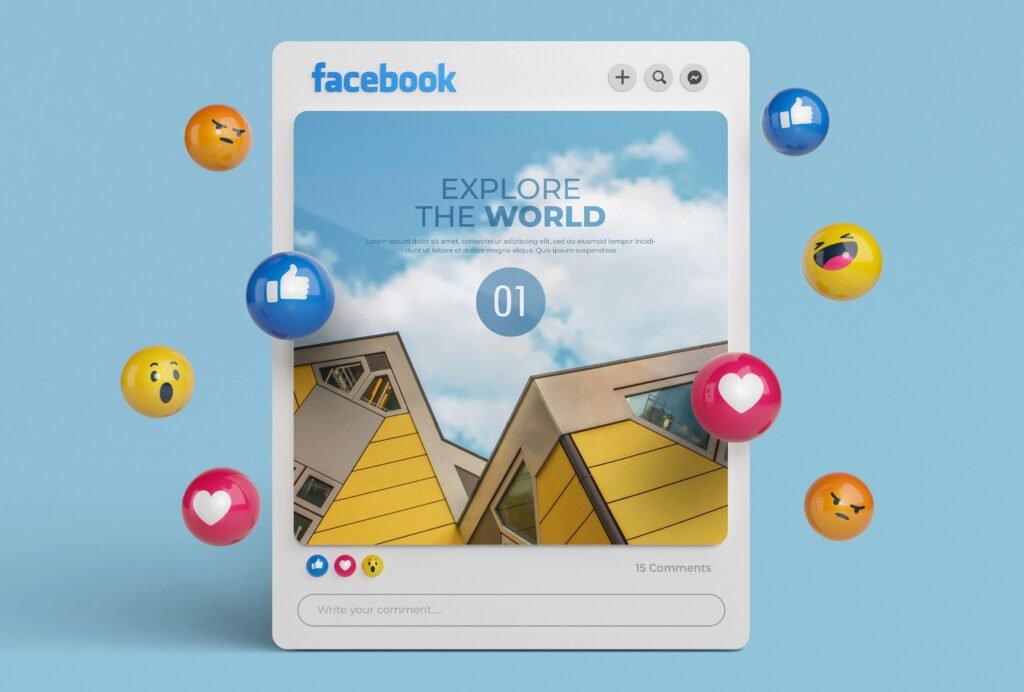
In the digital age, change is constant. While Google has long been the king of search engines, a major shift is happening quietly but rapidly—social media is becoming the new go-to search engine for millions of people around the world. Platforms like Instagram, TikTok, YouTube, and Pinterest are no longer just spaces for entertainment and social interaction. They have become powerful search tools and engagement hubs where users discover products, seek information, read reviews, and even make buying decisions.
In this blog, we’ll explore why social media is replacing traditional search engines in certain areas, how it’s changing user behavior, and what this shift means for businesses and digital marketers.
Why Are People Using Social Media to Search?
There was a time when we turned to Google for everything—from “how to tie a tie” to “best coffee shops near me.” While this behavior hasn’t disappeared entirely, the way people search for answers has become more diverse and visual.
Here are a few key reasons why social media is taking over:
- Visual Learning
Humans are visual creatures. Platforms like TikTok and YouTube are built entirely around videos, making it easier to absorb information quickly. Whether it’s a recipe, product demo, or travel guide, a short video can show more than a page full of text. - Authentic Content
On social media, content is often created by real people rather than companies. This authenticity builds trust. A product review from an Instagram influencer or an unboxing video on YouTube feels more genuine than a product description on an e-commerce site. - Faster, Smarter Algorithms
Social media algorithms are designed to understand user preferences and deliver personalized content. As a result, users often find what they’re looking for before they even type it into the search bar. - Engagement and Community
When someone searches for something on social media, they also get access to a community. Comments, shares, and reactions allow users to join the conversation, ask questions, or get recommendations from peers. That’s something Google can’t offer in the same way.
Platforms That Are Leading the Shift
Let’s take a closer look at how different platforms are acting like search engines:
- TikTok
TikTok is more than just dance videos. It’s now a platform for microlearning, reviews, and even local business discovery. Many users—especially Gen Z—search for things like “best cafes in Bangalore” or “how to fix a leaky faucet” directly in the TikTok search bar. Short, snappy, and helpful videos dominate this space. - YouTube
As the second-largest search engine in the world (after Google), YouTube has long been used for learning. Whether it’s tutorials, how-tos, or product comparisons, users often prefer to watch than read. Plus, comments below videos provide instant feedback and additional insight. - Instagram
Instagram is where people search for visual inspiration. From fashion trends to interior design ideas and makeup tutorials, users use hashtags, Reels, and the Explore tab like a visual search engine. Brands are using Instagram to not only showcase their products but also guide customers through purchase decisions. - Pinterest
Pinterest is an underrated but powerful search engine, especially for planning. From weddings and home décor to recipes and DIYs, Pinterest’s search features are incredibly intuitive and visually organized. Users can save ideas and return to them later, making it ideal for discovery and research.
What This Means for Businesses
The shift from search engines to social platforms has major implications for businesses, especially in marketing, branding, and content strategy.
1. Social Search Optimization
Just like traditional SEO, social media content needs to be optimized. That includes:
- Keyword-rich captions and hashtags
- Using alt text for images
- Geo-tagging for local discovery
- Creating searchable video content with titles and descriptions
2. Treat Social Profiles Like Landing Pages
Your Instagram, YouTube, or TikTok profile should give users a clear idea of who you are and what you offer. Use:
- A strong bio with keywords
- Link-in-bio tools to direct traffic
- Highlights or playlists to organize content
- Branded visuals and consistent posting
3. Create for Community and Engagement
Your audience doesn’t want ads—they want experiences. Create content that starts conversations:
- Ask questions
- Encourage comments and sharing
- Respond to DMs and comments
- Use polls, quizzes, and Q&A features
Adapting Your Digital Marketing Strategy
If you haven’t already, it’s time to rethink your marketing funnel. Discovery no longer starts on Google alone. Here’s how to adapt:
- Repurpose blog content into short videos for TikTok or Instagram Reels.
- Use social listening to identify what your audience is searching for.
- Post consistently, and test what formats (carousel, reel, story, live) get the best engagement.
- Collaborate with micro-influencers in your niche who can naturally promote your brand.
- Remember, attention spans are shorter than ever. The brands that provide quick, authentic, and engaging content will win.
Final Thoughts
The line between “social media” and “search engine” is becoming increasingly blurred. Today, when people want to learn, explore, or buy—they don’t just Google it, they Instagram it, YouTube it, or TikTok it. For brands, this presents a golden opportunity.
It’s no longer enough to be searchable—you need to be watchable, engaging, and present on the platforms where your audience actually spends time. Social media is now the front door to your business. Make sure it’s welcoming, optimized, and full of value.
🔗 Key Takeaways:
- Social media is rapidly becoming a preferred search tool, especially among younger audiences.
- Platforms like TikTok, Instagram, and YouTube are driving product discovery and user engagement.
- Businesses must optimize content for social search and focus on authentic, engaging experiences.
Social platforms are no longer just for awareness—they are purchase decision drivers.

